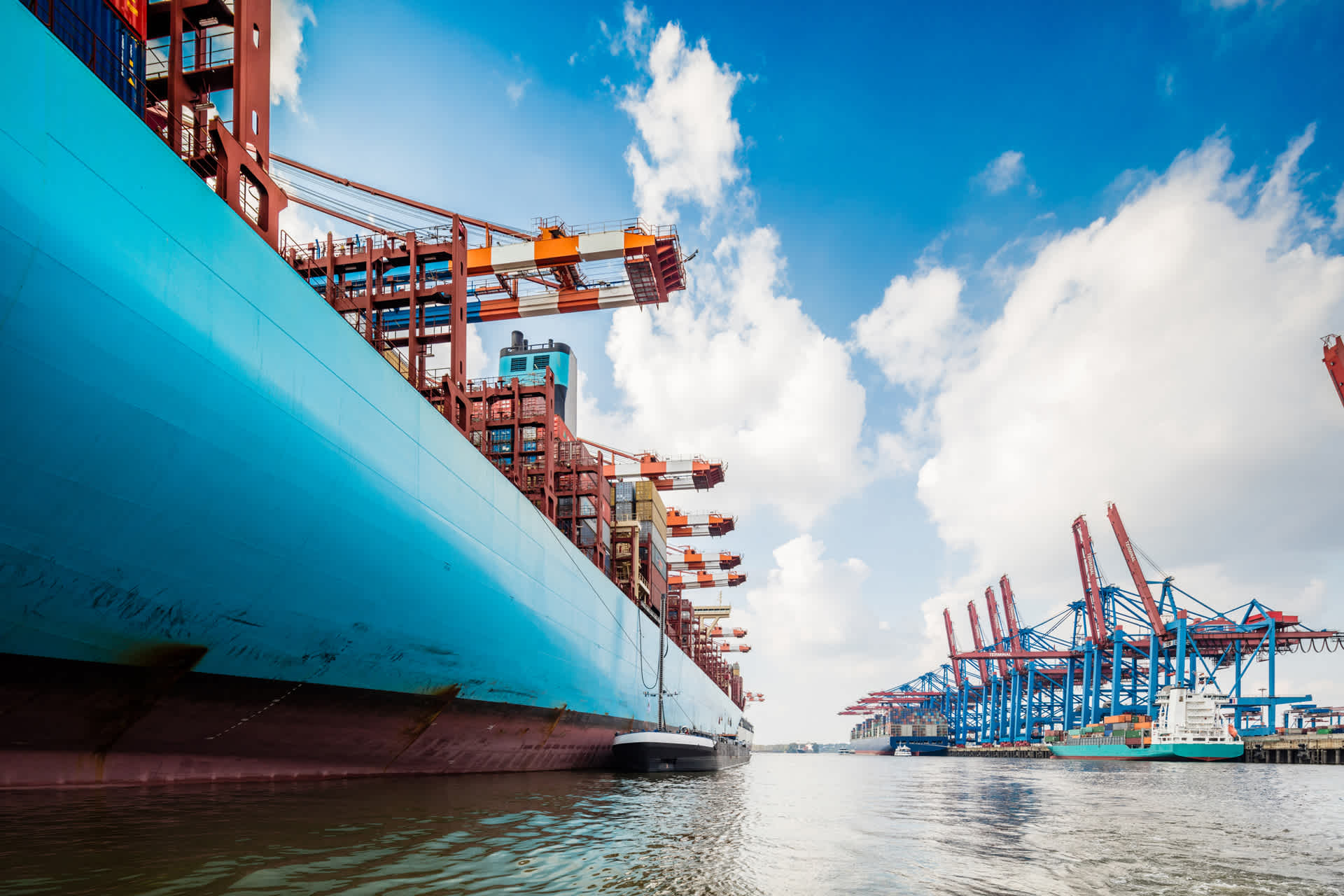Global Logistics Update
Freight Market Update: March 22, 2022
Ocean and air freight rates and trends; customs and trade industry news plus Covid-19 impacts for the week of November 16, 2021.
Freight Market Update: March 22, 2022
North America Freight Market Update Live | Thurs, March 24 @ 8:30 am PT / 11:30 am ET
European Freight Market Update Live | Tue, April 5 @ 16:00 CEST / 15:00 BST
Logistics Rewired: Driving Fashion Forward for Good | Weds, March 30 @ 9:00 am PT / 12:00 pm ET
Join Flexport.org’s team in a conversation about sustainability within the fashion supply chain. How do you measure your brand’s carbon emissions? What options are available to help offset your shipping-related emissions? Our panel of experts will discuss all this, plus share how real brands are reducing their carbon footprint with the free tools available at Flexport.org.
Ocean Freight Market Update
Asia → North America (TPEB)
- Disruptions and restrictions due to Covid outbreaks in China cause headaches for production and trucking in Southern (Shenzhen/Dongguan) and Eastern (Shanghai) regions. Ocean carriers continue to assess impacts to bookings and have not yet announced any blank sailings. Additional volatility drivers in the market remain: severe congestion, equipment imbalances, sliding vessel schedules, port omissions, blank sailings, and increased fuel charges. The moving market remains primarily at premium levels with some pockets and routings open for FAK.
- Rates Rate levels remain elevated and the premium market is strong.
- Space Undercapacity, except in pockets
- Capacity/Equipment Critical/Severe Undercapacity
- Recommendation Book at least 3-4 weeks prior to CRD. Consider premium options. Be flexible in regard to equipment and routings. Check closely with suppliers to understand any Covid-related impacts or changes to production outputs and forecasts.
Asia → Europe (FEWB)
- The COVID situation in China has somewhat improved but does continue to have a business impact. Factory production within Shenzhen has partially resumed since Monday after some of the lockdown restrictions were lifted. Dongguan is also expected to have more factories resume normal operations soon. Trucking shortages due to strict COVID rules are still a challenge for a number of ports. There is available space on FAK and spot across all alliances but carriers are still not open for more long-term named accounts. It is expected that there will likely be some port omissions and blank sailings announced by carriers as a response to recent developments.
- Rates Rates remain at a high level but have been on a downward trend throughout March due to a slowdown in the market.
- Space Tight space situation
- Capacity/Equipment Severe equipment shortage across all Asia origins.
- Recommendation Book at least 2 to 3 weeks prior to CRD. Be flexible in regard to equipment.
Europe → North America (TAWB)
- Congestion at USEC ports has not improved but NYC and Savannah are almost working at normal levels. USWC waiting time is slightly improving in Los Angeles but overall still around 35 days.
- Rates Ocean levels continue to raise with PSS and GRI increases announced for March and April rates.
- Space Critical, especially to the USWC and also on the USEC going into Q2
- Capacity/Equipment Capacity remains tight for both North Europe and Mediterranean services. Better equipment availability at port. Shortages remain at inland depots.
- Recommendation: Book 5 or more weeks prior to CRD. Request premium service for higher reliability and no-roll guarantees.
Indian Subcontinent → North America
- Equipment shortages and congestion grow. India, predominantly a net importer, has seen tremendous growth in exports in the past 2-3 months. This trend has now made India a balanced importer/exporter which means equipment is leaving just as fast as it is coming in. This trend is expected to continue as supply chains shift from other manufacturing countries. Congestion is also growing in S/SE India as well as Colombo, Sri Lanka. A fuel rationing measure in Colombo is resulting in a severe lack of trucking capacity. Delays should be expected for transshipment cargo utilizing Colombo.
- Rates Maintained through 2H March. Premium rate levels should be expected for smaller Indian ports and Bangladesh as demand exceeds vessel/equipment supply.
- Space to the USWC is and will remain a challenge into 2022. Port omissions on services to the USWC continue to cut capacity out of the Indian sub-con. Recommendation is to move on premium services.
Space to the USEC will be difficult into Savannah, Charleston, and New York until April as bunched vessels off the coast of USEC are resulting in longer turn-around time back to origin and port of discharge omissions. This leaves a gap of sailings for the most consistent services typically relied upon for ISC to the USEC.
Equipment deficits are being reported across many ports in India. Most affected are the S/SE ports, Kolkata, and Inland container depots in North India.
Recommendation remains to load via wet port and avoid Inland container depots when possible. ICDs are a chokepoint for containers which often leads to delays in SO release. Booking on some premium services will give you priority on equipment.
North America → Asia
- Vessel arrivals and available capacity remain fluid for USWC POLs. USEC situation sees Savannah operations improving however Charleston is congested and subject to omissions on certain strings. Erratic vessel schedules continue to create void sailings and delays in schedules creating significant challenges with posted earliest return dates and vessel cut-offs at the port.
- Rates Limited GRI activity announced for April.
- Equipment Deficits on containers and chassis continue to plague IPI origins. Availability for standard equipment at ports has not been an issue, but any special equipment is hard to come by.
- Recommendation Please place bookings 4 weeks prior to vessel ETD.
North America → Europe
- Significant congestion and vessel delays in Europe are now hampering the ongoing schedule issues for New York, Charleston, and Savannah. US West Coast service to Europe is extremely tight due to void sailings and skipped ports caused by systematic delays. Pacific Northwest coverage for Europe is suspended indefinitely. All carriers have issued a booking stop for shipments to Ukraine, Russia, and Belarus.
- Rates One GRI announced for April 1 to UK destinations only.
- Equipment Deficits are still plaguing IPI origins. Availability for standard equipment at ports has not been an issue, but any special equipment is hard to come by.
- Recommendation Please place bookings 3 to 4 weeks in advance for East Coast/Gulf sailings and 6 weeks for Pacific Coast sailings.
Air Freight Market Update
Asia
- N.China: Rates continue to decrease as a result of a shortage of demand. Some key reasons are factory closures, trucking issues, and the lack of manpower due to quarantine policies. The number of positive Covid cases in Shanghai has also increased and the situation is not expected to improve this month.
- S. China: Carriers ex-HKG have reduced their flight frequency due to the Covid outbreak and the Russia-Ukraine conflict but the market demand is slowly getting better as Shenzhen gradually lifts restrictions. Cross-border trucking capacity remains very limited, however, some factories and terminals are beginning to resume work. Rates remain similar to last week.
- Taiwan: TPEB demand is picking up, largely in part due to the quarter ending. Flight capacity to popular hubs such as LAX and JFK is mainly available at the end of the week at the earliest. FEWB demand and market capacity remain stable. Carriers have again announced fuel increases starting March 22, and with an anticipated hotter TPEB market air freight rates are expected to increase as well.
- SE Asia: Demand ex-Thailand remains at a similar level to last week, but there is potential for demand to increase as companies rush to ship by the end of the quarter. The market ex-northern Vietnam has picked up slightly but rate levels remain the same. Some capacity has been reduced due to aircraft maintenance. TPEB demand ex-southern Vietnam has increased a bit with rate levels maintaining at similar levels. FEWB demand remains weak.
Europe
- Demand is stable again this week, the upcoming change in season is seeing a small increase in air freight requests for inventory to be stocked for Summer.
- Rates are at a stable high and we are seeing fuel surcharges be the reason for pricing increases by airlines. The IATA Jet Fuel Index is at record high levels, and airlines will pass through the cost.
- Freighter capacity is heavily reduced and booking to uplift window is approx 10 days.
- Deferred routings are still providing a viable routing option if already tight lead times can take it. We also see cheaper options on the market to secondary hubs where airlines have regular passenger flights.
- Slight congestion at EU terminals, through high volumes, therefore a potential increased transit time.
Trucking & Intermodal
Americas
- US Import/Export Trucking Market Trends
- The expanding cartage network has positioned Flexport to move air and LCL cargo with the speed our clients demand. The percentage of intact ULD’s recovered within 12 hours of arrival increased to 55% from 15% in January. Short haul deliveries (final mile between 61-150 miles) have made a dramatic improvement to 126 hours from arrival to delivery, with the goal being 96 hours. We are seeing CFS congestion continue to decline as well, with the OTP gap between warehouse legs and direct to door being nearly erased. Both OTP metrics have improved by 400% since the peak of CFS congestion seen in early January.
- Port congestion has rapidly increased across several East Coast ocean ports which has negatively impacted trucker’s productivity and chassis availability - and in turn depleted overall drayage capacity. From Houston and the Gulf Coast markets up to NY/NJ, continuous record import volume has overwhelmed the port and trucking infrastructure leading to an increasing backlog of containers & vessels at anchor awaiting berth.
- The Port of CHS has the highest import dwell time and vessel backlog currently on the EC. Import containers are dwelling an average of 10 days on terminal before pickup - and ⅓ of the total containers at Wando terminal have been dwelling 15+ days. As of this writing, 30+ vessels were awaiting a berth at CHS to unload.
- West Coast ports are seeing a temporary decrease in the number of vessels at port, congestion issues will persist during March due to the lack of chassis and high terminal yard utilization across all the WC.
- FSC will likely increase in March as diesel prices continue to rise.
- The Quebec Ministry of Transport has issued its regulations for the annual Spring Thaw Period, which reduces the authorized load limits on all public roads (8 to 20% weight reduction). The weight restrictions apply to all truck movement to and from Quebec. See below the Thaw Period Dates and Zones
- Zone 1: From Monday, March 7 (00:01) to Friday, May 6 (23:59)
- Zone 2: From Monday, March 14 (00:01) to Friday, May 13 (23:59)
- Zone 3: From Monday, March 21 (00: 01) to Friday, May 20 (23:59)
- US Domestic Trucking Industry Update
- Supply/Demand
- Capacity Update: We are still expecting continued challenges with capacity throughout 2022. It is difficult to tell whether or not we will see equipment and/or driver issues begin to improve as the year progresses, but no clear improvements are expected in the short term.
- Demand Update: Spot volumes surged in January as continued bouts of severe winter weather and surging COVID case counts made it difficult for capacity networks to find balance. Throughput at the ports and in manufacturing and industrial production continues to act as a bottleneck for freight volumes as there are no signs of a pullback in overall freight movements or demand. We expect to see a slight pullback in spot volumes as a result of improved contract compliance for the remainder of the first quarter, assuming we see stable weather conditions and a continuation of declining COVID case counts.
- Truckload Demand: Elevated contract rates are resulting in improvements to tender rejections, but only as conditions allow. When capacity is disrupted or driver shortages are exacerbated by surging COVID cases, we expect to see volatility followed by a return to the downward trend once stability is seen. With demand expected to remain strong, easing pressures will only come as fast as capacity can enter the market. In the short term, we expect the next opportunity for surges in market volatility, excluding weather events or other unforeseen events, will be in the back half of March as we approach the end of the first quarter.
- Looking Ahead
- The outlook for conditions, as we look ahead in 2022, will continue to largely depend on what we see from truckload demand. Congestion at the ports and backlogged orders in manufacturing and industrial production indicate that we should expect demand strength to continue. Inflation and the expiration of government stimulus will continue to result in a reduction in consumer spending power, likely leading to pullbacks in consumer demand. There has been little to no improvement in capacity conditions, which continued to see challenges with driver and equipment availability. COVID case counts have improved, but new surges have shown the potential to be highly disruptive to both domestic and overseas labor availability, and influence the balance of spending between durable goods and services.
- Supply/Demand
Customs and Compliance News
U.S. Senate moved Forward on Effort to Shape China Trade Compromise Bill
On March 21, the Senate invoked cloture on the motion to proceed on the America COMPETES Act, the House’s counterpart bill to the Senate’s USICA Act. The Senate Majority and Minority leaders have indicated their goal to begin conference negotiations before April 8. The House returns on March 28, making an early April timeframe to begin talks increasingly likely.
U.S. House passed Bill to revoke Permanent Normal Trade Relations with Russia and Belarus
The House passed a bill to end Russia's and Belarus's ability to export goods to the US under Permanent Normal Trade Relations (PNTR) status, placing Russian and Belarussian imports in Column 2 of the Harmonized Tariff Schedule. The designation would result in higher tariff rates for Russian and Belarussian imports. The bill and another bill on the ban of oil, natural gas and coal imports from Russia will go to the Senate simultaneously.
Factory Output News
- China 2022 Jan to Feb China’s automotive exports volume has increased 75% Source
- Taiwan Major electronics manufacturers are planning to expand production in Taiwan and overseas Source
- Vietnam Export turnover of over 1 billion USD for nine commodities in the first two months of 2022 Source
- Malaysia External Trade Development Corporation identified Central Asia, mainly Kazakhstan and Uzbekistan as potential markets for expansion and trade Source
- Indonesia Construction of the first Hyundai Motor Co. manufacturing plant completes in Indonesia Source
- India Suzuki plans to invest $1.37B in its India factory to produce electric vehicles and batteries. This is the first major EV plan announced by Maruti Suzuki for India in a bid to align itself with its national strategy. Source
Freight Market News
West Coast Port Congestion Moves East
The Loadstar has reported that the average waiting times for vessels at both Los Angeles and Long Beach ports has been reduced by half, with the number below 50 ships. The easing of congestions is due in part to supply chain disruptions in China, improved landside operations, and the increasing preference to ports on the East Coast and Gulf Coast.
Canadian Pacific Railway Ceases Operations Following Failed Labor Talks
SupplyChainBrain has reported that one of Canada’s largest railways will be halting their operations after failing to reach a labor deal with unionized workers, who were pushing for increased wages and improved benefits and pensions. This disruption is likely to further impact supply chains, particularly for fertilizer markets.
Freight Market Update is a complimentary service from Flexport, the modern freight forwarder. If you're not already a subscriber, we invite you to subscribe here.
Please note that the information in our publications is compiled from a variety of sources based on the information we have to date. This information is provided to our community for informational purposes only, and we do not accept any liability or responsibility for reliance on the information contained herein.


